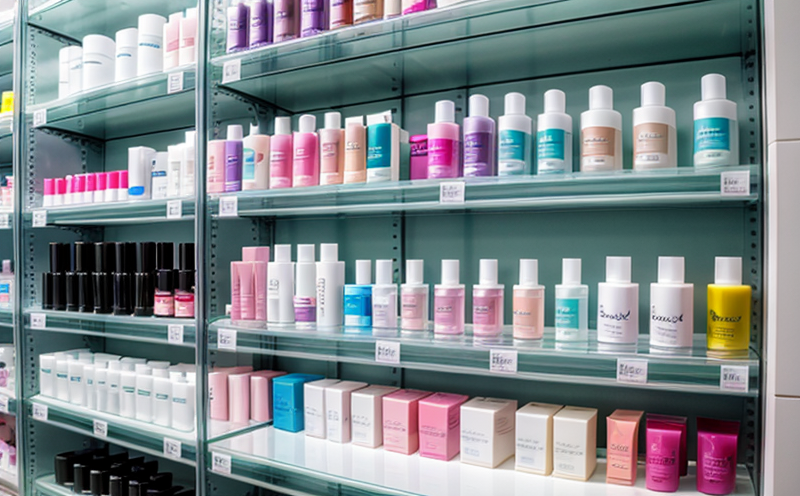Pigment Sedimentation Testing in Cosmetic Formulations
The stability and shelf life of cosmetic formulations are critical to ensuring product quality and consumer satisfaction. Pigment sedimentation testing is a crucial component of this process, providing insights into the behavior of pigments within cosmetic products over time. This test evaluates how pigments settle out or re-disperse in various conditions, which helps manufacturers ensure consistent color performance throughout the shelf life of their products.
Incosmetics, for instance, highlights the importance of pigment stability as a key factor in the development and quality assurance of cosmetic formulations. The test is particularly relevant for products that contain pigments such as mica, iron oxides, or carbon black, which can settle out or change color over time.
The method involves preparing samples under controlled conditions to simulate real-world storage scenarios. This might include exposure to temperature and humidity variations that mimic environmental factors consumers encounter during use and storage at home. By measuring the rate of pigment sedimentation, manufacturers can assess the product's ability to maintain its appearance over time.
The significance of this test extends beyond aesthetic concerns; it also impacts consumer perception and satisfaction. A product with inconsistent color or poor stability may lead to customer dissatisfaction and potential returns. In a competitive market, maintaining consistent quality is essential for brand reputation and loyalty.
Standardized testing methods such as those outlined in ISO standards provide a reliable framework for pigment sedimentation tests. These guidelines help ensure that the results are reproducible and comparable across different laboratories and products. Adherence to these standards ensures that manufacturers can rely on accurate data when making decisions about product formulation and quality assurance.
For example, ISO 22716:2011 specifies procedures for the microbiological examination of cosmetics and personal care products, which indirectly supports pigment sedimentation testing by ensuring that the environment in which pigments are tested is free from contaminants. This standardization helps maintain product integrity and enhances consumer trust.
| Standard | Description |
|---|---|
| ISO 22716:2011 | Microbiological examination of cosmetics and personal care products |
| ASTM D4583-19 | Standard test method for measuring the sedimentation volume of a pigment dispersion in water |
Why It Matters
The importance of pigment sedimentation testing cannot be overstated. Consistent color performance is not only aesthetically pleasing but also legally and ethically important. Regulatory bodies such as the FDA require cosmetic products to meet certain quality standards, including stability over time. Ensuring that pigments do not settle out or change in appearance helps manufacturers comply with these regulations.
From a consumer perspective, consistent color is a key factor in brand loyalty and satisfaction. A product that does not maintain its intended appearance can lead to negative reviews and lost sales. For R&D teams, this test provides valuable data for optimizing pigment dispersion and formulation strategies. This information helps ensure that the final product meets both regulatory requirements and consumer expectations.
From a quality management standpoint, pigment sedimentation testing is part of a broader suite of tests designed to monitor product quality throughout the production process. By integrating this test into their workflow, manufacturers can identify potential issues early in the development cycle, reducing costs associated with rework or product recalls.
Why Choose This Test
- Avoids visual inconsistencies in final products
- Ensures compliance with regulatory standards and guidelines
- Saves time and resources by identifying issues early in the development process
- Promotes brand reputation through consistent product performance





